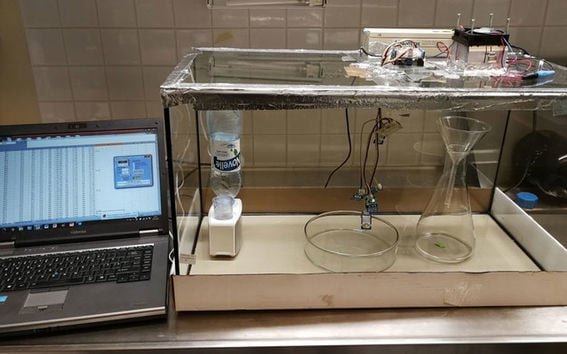New measurement methods recognise pollutants in indoor air before they cause problems

New measurement methods under development help find hidden problems in time.
The aim of the Sisäilmapoliisi (Indoor Air Police) project started in 2016 is to develop methods that provide information about experienced and measured indoor air quality in real time and in a cost effective way. The project is developing new instruments and methods that can be used to measure, identify and locate sources of indoor air pollutants in buildings. In addition, the project will examine and develop Internet based systems for gathering, recording and analysing data on perceived indoor air quality and examine how the models describing measurement data, user feedback and the creation of dynamic pollutants can be used to anticipate and prevent the aggravation and occurrence of indoor air problems.
The new methods can be used to intervene in indoor air problems more efficiently and at an earlier stage.
Currently, there is equipment under development that condenses water from air, measures the surface tension and conductivity of the water in real time and collects a water sample for further analysis. It has been proven in laboratory tests (image 1) that aerosolized water droplets carries pollutants. Condensed water can be analysed using toxicity tests and capillary electrophoresis to identify the pollutants.
Another measurement system under development is able to detect hydrogen sulphide in indoor air. Hydrogen sulphide is problematic even in small concentrations. It can be introduced to indoor air from drains and plaster materials damaged by water, for example. Silver is tarnished due to the sulphides in air. Tarnish on silver can be used to discover if air contains sulphide gases.
‘Both new methods being developed enable detecting and eliminating indoor air problems before they cause harm to people in a facility’, project leader Professor Arto Visala comments on the results of the project.
The aim of the companies participating in the project is to increase their expertise in indoor air and to commercialise and implement the project results in product development and service business.
InspectorSec Oy, RF SensIT Oy, Oy Ilmastointimittaus Lind Oy, SmartWatcher Oy and Spira Oy produce measurement systems that can be used to detect indoor air problems. L&T Korjausrakentaminen Oy, Sisäilmatutkimuspalvelut Elisa Aattela and Cramo Finland Oy use indoor air measuring systems in service business. Dynaamiset rakenteet ry ja Termex-Eriste Oy develop new environmentally friendly insulation materials that do not release pollutants to indoor air. Aalto University Properties Ltd owns and manages properties where any indoor air problems should be detected as soon as they arise. Each company utilises the results of the project in their own way. The Sisäilmapoliisi project is set to continue until the end of 2018.
Contact persons:
Professor Arto Visala, Aalto University, Department of Electrical Engineering and automation
tel. +358 (0)50 575 5936
[email protected]
Assistant Professor Heidi Salonen, Aalto University, Department of Civil and Structural Engineering
tel. +358 (0)50 597 1173
[email protected]
- Published:
- Updated:
Read more news

DeployAI Partners Gather for Heart Beat Meeting in Helsinki
The European DeployAI project's partners gathered for the Heart Beat meeting hosted by Aalto University Executive Education in Helsinki.
Get to know us: Associate Professor Maria Sammalkorpi
Sammalkorpi received her doctorate from Helsinki University of Technology 2004. After her defence, she has worked as a researcher at the Universities of Princeton, Yale and Aalto.
Aalto computer scientists in ICML 2024
Computer scientists in ICML 2024